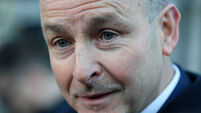Concern over rise in number of injecting drug users
Official figures show that 66% of people in treatment in 2000 had injected drugs, compared to 55% in 1996.
In addition, 76% of injecting users said they had shared their syringes, compared to 69% in 1996.
The rise in injecting is not just confined to heroin addicts, but is increasingly including problem cocaine users.
"The increase in injecting and sharing practices associated with opiate and, more recently, cocaine use has very serious implications for the future health of the population of drugs users involved in those practices," said Dr Jean Long of the Health Research Board, which released the figures.
"This is particularly the case in relation to the transmission of blood-borne infectious diseases and episodes of overdose."
It is estimated that more than 80% of injecting drug users have hepatitis C.
Separate figures released yesterday by the National Disease Surveillance Centre showed that the number of intravenous drug users with HIV increased by a third last year.
The HRB figures show that among new treatment cases, the percentage of injectors had not increased between 1996 and 2000, standing at around a third of users.
Dr Long, of the Drug Misuse Research Division of the HRB, said this presented treatment services with an opportunity to prevent new users progressing to injecting.
Over 60% of new cases in 2000 said they had shared their syringes, compared to 50% in 1996.
HRB figures show that in relation to heroin users the trend of injecting and sharing was even prevalent.
The number of heroin users who injected increased from 53% in 1996 to 70% in 2000.
In relation to new cases, the number rose from 37% in 1996 to 50% in 2000.
Other figures in the HRB report show that:
l Half of those in treatment are receiving long-term methadone maintenance a substitute for heroin.
l The number of outpatient treatment centres increased from 35 in 1996 to 104 in 2000.
l The number of homeless drug users in treatment almost tripled from 114 in 1996 to 305 in 2000.
l Treatment for problem cannabis use jumped from 21% of all new cases in 1996 to 35% in 2000.













